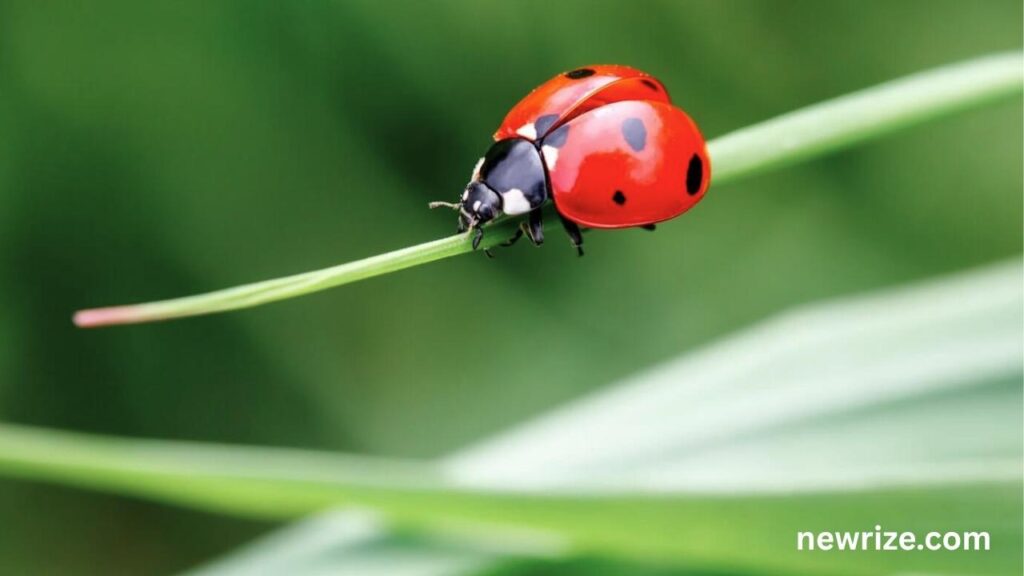What Do Ladybugs Eat? A Complete Guide. Ladybugs, with their bright red shells and black spots, are among the most beloved insects in gardens worldwide. But beyond their charming appearance, these tiny beetles play a crucial role in maintaining ecological balance. Understanding what ladybugs eat is essential for gardeners, farmers, and nature enthusiasts who want to support these beneficial insects. Their diet primarily consists of pests like aphids, making them natural pest controllers. Whether in the wild, your garden, or even indoors, ladybugs have specific dietary needs that help them thrive. Let’s explore their fascinating eating habits in detail.
1. What Do Ladybugs Eat in the Wild?
In their natural habitat, ladybugs are voracious predators with a strong preference for soft-bodied insects. Their diet mainly includes:
- Aphids – Their favorite food, makes up a significant part of their diet.
- Mites – Tiny pests that infest plants.
- Scale insects – Small, sap-sucking bugs found on stems and leaves.
- Mealybugs – Soft-bodied insects that damage crops.
- Insect eggs & larvae – Ladybugs also consume eggs of other pests.
Since they are opportunistic feeders, wild ladybugs adapt their diet based on availability. They play a vital role in controlling pest populations, helping maintain healthy ecosystems.
Read Also: How Many Grams Are in a Pound? Conversion
Ladybug Diet in the Wild (Comparison Table)
| Food Source | Frequency in Diet | Impact on Ecosystem |
|---|---|---|
| Aphids | Very High | Major pest control |
| Mites | Moderate | Protects plant health |
| Scale Insects | Moderate | Prevents plant damage |
| Mealybugs | High | Reduces crop loss |
| Insect Eggs & Larvae | Occasional | Disrupts pest cycles |
2. What Do Baby Ladybugs (Larvae) Eat?
Ladybug larvae look nothing like their adult forms, resembling tiny, spiky alligators, but they are just as hungry! Their diet is similar to that of adult ladybugs, but is even more focused on high-protein prey to support rapid growth.
- Aphids – A primary food source, sometimes consuming dozens per day.
- Thrips – Small, slender insects that damage plants.
- Whiteflies – Tiny, sap-sucking pests common in gardens.
- Other soft-bodied insects – Larvae are less picky and eat any small, vulnerable prey.
Ladybug larvae are incredibly efficient pest controllers, often eating more than adults before pupating into their final beetle form.
3. What Do Ladybugs Eat in Gardens or Farms?

Gardeners and farmers love ladybugs because they naturally reduce the need for chemical pesticides. In cultivated areas, ladybugs feast on:
- Aphid colonies – A single ladybug can eat up to 5,000 aphids in its lifetime.
- Spider mites – Common pests in vegetable gardens.
- Caterpillar eggs – Preventing future infestations of harmful larvae.
- Other small garden pests, include psyllids and leafhoppers.
By introducing or attracting ladybugs, gardeners can protect their plants organically while supporting biodiversity.
Read Also: Digital Transformation Scale Agile Solutions & Roadmap 2025
4. What Do Ladybugs Eat in Winter?
During colder months, ladybugs enter a dormant state called diapause, similar to hibernation. Since food is scarce, they rely on stored fat and do not eat much. However, on warmer winter days, they may consume:
- Leftover aphids – If any remain on evergreen plants.
- Pollen & nectar – Occasionally, they sip on flowers that bloom late.
- Honeydew – A sugary secretion from aphids.
Most ladybugs survive winter by clustering together in sheltered spots, conserving energy until spring when food becomes abundant again.
5. Do Ladybugs Eat Aphids?
Yes! Aphids are a primary food source for most ladybug species. Both adults and larvae actively hunt aphid colonies, making them a gardener’s best friend.
- A single ladybug can consume 50+ aphids per day.
- They target aphids on roses, vegetables, fruit trees, and ornamental plants.
- Their appetite for aphids makes them a key player in organic farming.
Without ladybugs, aphid populations could explode, causing severe damage to crops and gardens.
6. Do Ladybugs Eat Plants?
Most ladybug species are strictly carnivorous, but a few (like the Mexican bean beetle and squash beetle) may feed on plants. However, the majority prefer pests over vegetation.
- Herbivorous ladybugs are rare and considered pests themselves.
- Most species stick to insects, avoiding plant damage.
- Pollen & nectar are occasionally consumed but not a primary food source.
Gardeners should encourage carnivorous ladybugs while keeping an eye out for plant-eating varieties.
7. Foods Ladybugs Dislike or Avoid
While ladybugs are not fussy eaters, they do avoid certain foods, including:
- Hard-shelled insects, like beetles or ants, are difficult to eat.
- Toxic prey – Some insects secrete defensive chemicals.
- Processed human food – Bread, meat, or sugary snacks are unsuitable.
- Dry or woody plants – They prefer soft-bodied prey over vegetation.
Stick to their natural diet for optimal health if keeping ladybugs at home.
8. Ladybugs in Pest Control
Ladybugs are nature’s pest control agents, offering numerous benefits:
- Reduce pesticide use – Decreasing chemical reliance in farming.
- Protect crops – Preventing aphid and mite infestations.
- Support biodiversity – Maintaining a balanced ecosystem.
- Cost-effective solution – Farmers release them as biological control agents.
By protecting ladybugs, we promote sustainable agriculture and healthier gardens.
9. Can You Feed a Ladybug at Home?
If you’re keeping ladybugs temporarily (e.g., for pest control or observation), you can feed them:
- Raisins (soaked in water) – A quick sugar source.
- Honey (diluted with water) – Provides energy.
- Aphids (if available) – Their natural prey.
- Commercial insect food – Sold in specialty stores.
| Food Option | How to Serve | Notes |
|---|---|---|
| Soaked raisins | Soften in water | Provides quick energy |
| Diluted honey | Mix with water (50:50) | Good Option |
| Fresh aphids | Collect from plants | Best natural option |
| Commercial insect food | Follow package instructions | Specialized diets |
Avoid overfeeding and provide a moist environment to maintain their health.
10. Best Foods to Attract Ladybugs
To invite these helpful insects into your garden, plant:
- Flowering herbs – Dill, cilantro, and fennel attract aphids (which then attract ladybugs).
- Marigolds & calendula – Their pollen is a secondary food source.
- Yarrow & cosmos – Ladybugs love these nectar-rich flowers.
- Avoid pesticides – Chemicals kill both pests and beneficial insects.
A diverse, pesticide-free garden ensures a steady ladybug population.
Conclusion
Ladybugs are far more than just pretty insects, they are voracious predators that keep harmful pests in check. From devouring aphids in gardens to supporting sustainable farming, their diet makes them invaluable to ecosystems worldwide. Whether in the wild, your backyard, or even indoors, understanding what ladybugs eat helps us protect and nurture these beneficial beetles. By planting ladybug-friendly flowers and avoiding pesticides, we can ensure they continue to thrive, maintaining the delicate balance of nature. Next time you spot a ladybug, remember—it’s not just a cute bug but a tiny guardian of your garden!





